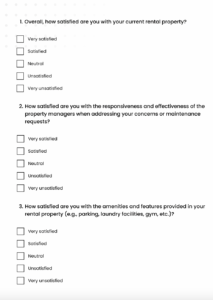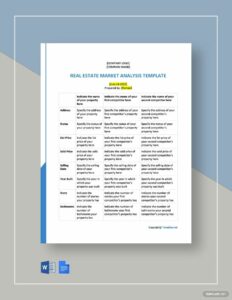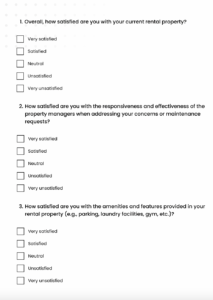Utilizing a structured reporting system offers several advantages. It creates a documented record of reported issues, protecting both the renter and the property owner. Clear communication minimizes disputes and ensures that repair requests are handled efficiently. This contributes to improved tenant satisfaction, reduced vacancy rates, and better upkeep of the property, ultimately enhancing its value.
This article will explore the key components of effective forms, best practices for their implementation, and the legal considerations surrounding their use.
Key Components of a Maintenance Request Form
Effective maintenance request forms require specific information to ensure clarity and facilitate timely repairs. The following components are essential:
1. Tenant Identification: Full name, contact information (phone number, email address), and unit number allow for clear identification and direct communication regarding the repair.
2. Property Details: Accurate property address ensures the request is directed to the correct management personnel.
3. Date of Request: Provides a timestamp for the request, useful for tracking response and repair times.
4. Location of Issue: Specific details about where the repair is needed within the unit (e.g., “kitchen sink,” “master bedroom ceiling”) aid in accurate assessment and dispatch of appropriate personnel.
5. Description of Issue: A clear and concise description of the problem, including details about its onset and any related circumstances, facilitates accurate diagnosis and efficient repair.
6. Supporting Documentation: Photographs or videos can provide valuable visual evidence of the issue, aiding in assessment and expediting the repair process.
7. Priority Level (Optional): Allowing tenants to indicate the urgency of the repair (e.g., emergency, routine) helps prioritize maintenance tasks and allocate resources effectively. Clear guidelines on what constitutes an emergency should be provided.
8. Authorization for Entry: A section for tenants to authorize entry to the unit in their absence facilitates timely repairs and minimizes disruptions.
These components contribute to a comprehensive record of the issue, facilitating clear communication between tenants and property management, and enabling efficient and effective property maintenance.
How to Create a Tenant Repair Request Template
Creating a standardized maintenance request form benefits both tenants and property managers. A well-designed template ensures clear communication, facilitates timely repairs, and contributes to accurate record-keeping.
1. Choose a Format: Select a format suitable for distribution and completion, such as a digital form (e.g., PDF, online form) or a printable document. Digital formats offer advantages in terms of accessibility, distribution, and storage.
2. Incorporate Essential Fields: Include fields for tenant identification, property details, date of request, location of the issue, description of the issue, and optional supporting documentation. Consider including a section for priority level and authorization for entry.
3. Provide Clear Instructions: Offer concise instructions on how to complete the form. Explain the purpose of each field and the expected level of detail.
4. Establish Submission Procedures: Clearly outline how tenants should submit completed forms, including designated recipients (email address, online portal, physical drop-off location), and expected response times.
5. Ensure Accessibility: Make the form readily accessible to all tenants. Consider providing versions in multiple languages if necessary, and ensure compatibility with assistive technologies for tenants with disabilities.
6. Regularly Review and Update: Periodically review the form and make necessary revisions based on feedback from tenants and property management. This ensures the form remains relevant and effective in addressing evolving needs.
A well-structured, accessible, and regularly updated form promotes effective communication and contributes to positive tenant-landlord relationships. It streamlines the repair process, reducing potential misunderstandings and facilitating timely resolution of maintenance issues, ultimately benefiting all parties involved.
Effective property management necessitates clear communication channels between tenants and landlords regarding necessary repairs. Standardized forms provide a structured framework for reporting maintenance issues, ensuring comprehensive documentation, efficient processing, and timely resolution. From detailed descriptions and visual documentation to authorized entry provisions and established submission procedures, each component contributes to a streamlined process, minimizing disputes and promoting positive tenant-landlord relationships. A well-implemented system benefits all parties by protecting property value, reducing vacancy rates, and fostering a safe and habitable living environment.
Proactive implementation of robust maintenance reporting systems contributes significantly to long-term property health and positive tenant relationships. Prioritizing clear communication and efficient repair processes fosters a sense of mutual respect and responsibility, ultimately benefiting the entire rental ecosystem. Investing in well-designed, accessible reporting mechanisms represents a commitment to responsible property management and contributes to a stable and thriving rental market.



